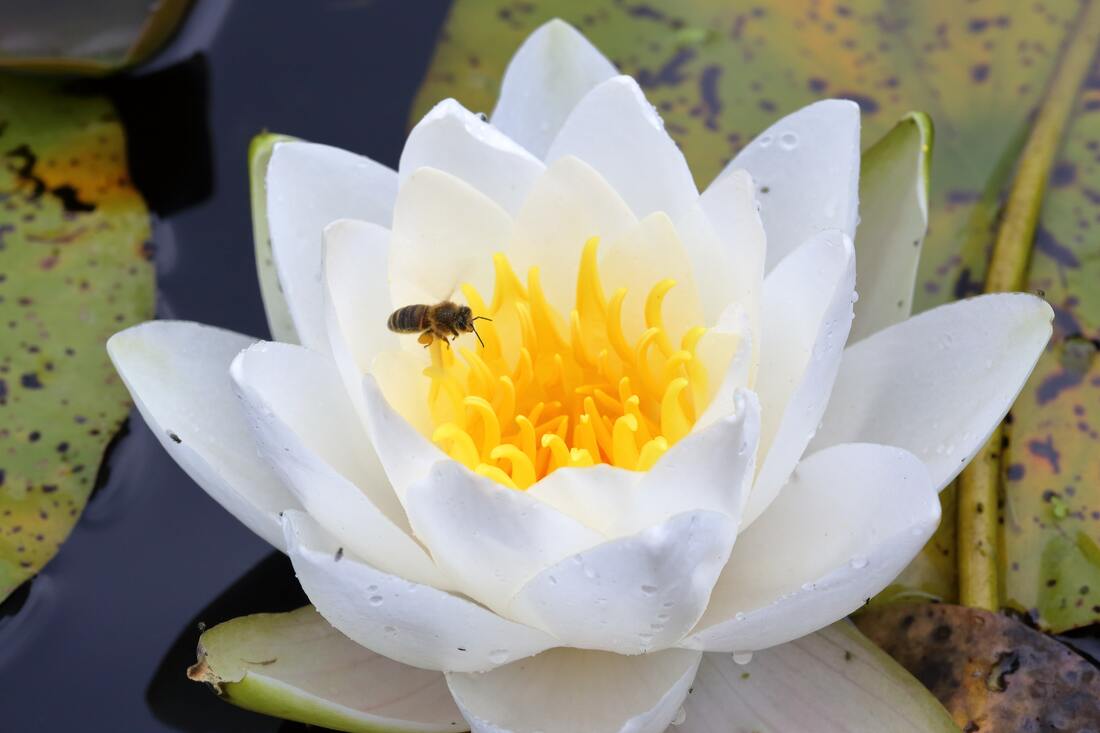The Vedas contain many mentions of different wild honeybees and their products. Many Hindu gods are associated with bees. For example, Vishnu, Krishna, and Indra are all called the nectar-born ones (Madhava). Vishnu is sometimes depicted as a blue bee on a lotus flower (the blue refers to the sky, the world of the gods) and Krishna, an incarnation of Vishnu, often carries a blue bee on his forehead. The name of the goddess Bhramari translates into “like a bee” and she was closely associated with bees, hornets, and wasps. She resides in the heart chakra and makes the buzzing sound of bees. Generally, the sound of a humming bee represents the essential sound of the universe.
|
Bees often symbolize spring and love and carry erotic associations. Hindu scriptures contain many examples of the intimate relationship between bees and flowers. Flowers most often mentioned as attracting bees are jasmine, mango, lotus, and waterlily, as well as heavenly flowers and trees. Beautiful women were also said to attract bees, which mistake them for flowers, sometimes because of their sweet breath or their lotus-like feet.
Some Hindu gods even have weapons related to bees, such as Kama, the god of love, who has a bowstring of bees. Bees symbolize the arrows of love, which are sweet and painful. The buzzing of bees is taken by poets as a romantic sound inciting love; hence, people who long for an absent or unwilling lover cannot stand to hear it. |
|
Honey
"Let every wind that blows drop honey Let the rivers and streams recreate honey Let all our medicines turn into honey Let the dawn and evening be full of honey Let the darkness be converted to honey Let our nourisher, the sky above be full of honey Let our trees be honey Let the sun be honey Let our cows make honey" (“Prayer to the Sun”, Rig Veda 1:90:6-8) |
This “Prayer to the Sun” suggests the importance of honey in Hinduism. The Vedas are sometimes compared to honeycombs because of their sweetness and beauty. Honey is often used as an offering, as in the ritual Madhu Abhisheka. In this ritual, honey and other substances are poured over the image of a deity being worshipped while mantras are chanted.
Honey plays an especially important role in Ayurvedic medicine, where it is used in more than 600 remedies. Ayurvedic medical texts refer to eight types of honey produced by different honeybees and purified according to ancient scriptures. Honey was and is used to heal and cleanse wounds and infections and for many other diseases. It is also used as a natural preservative and sweetener and to improve the side effects of other medicines.
Honey plays an especially important role in Ayurvedic medicine, where it is used in more than 600 remedies. Ayurvedic medical texts refer to eight types of honey produced by different honeybees and purified according to ancient scriptures. Honey was and is used to heal and cleanse wounds and infections and for many other diseases. It is also used as a natural preservative and sweetener and to improve the side effects of other medicines.


